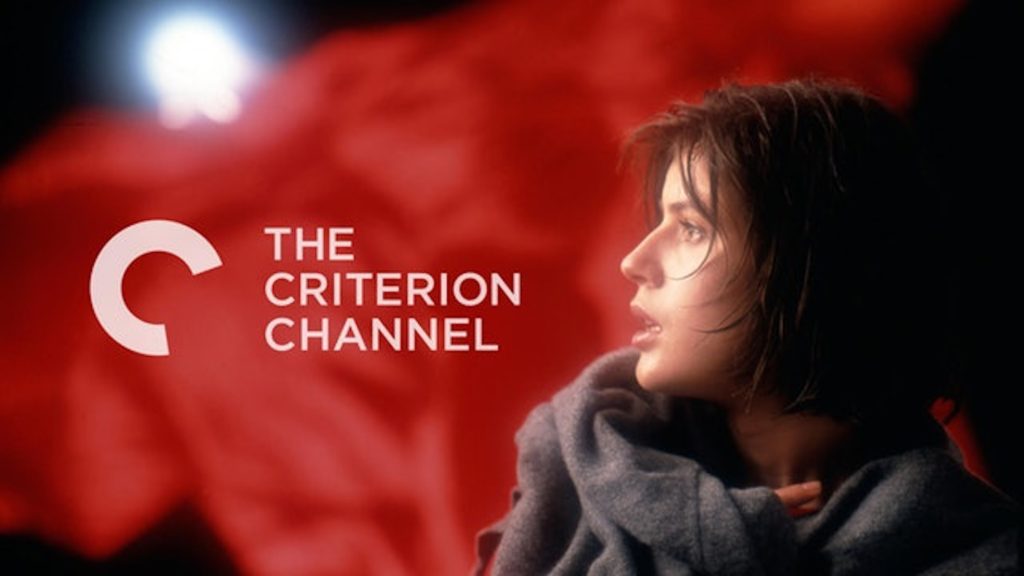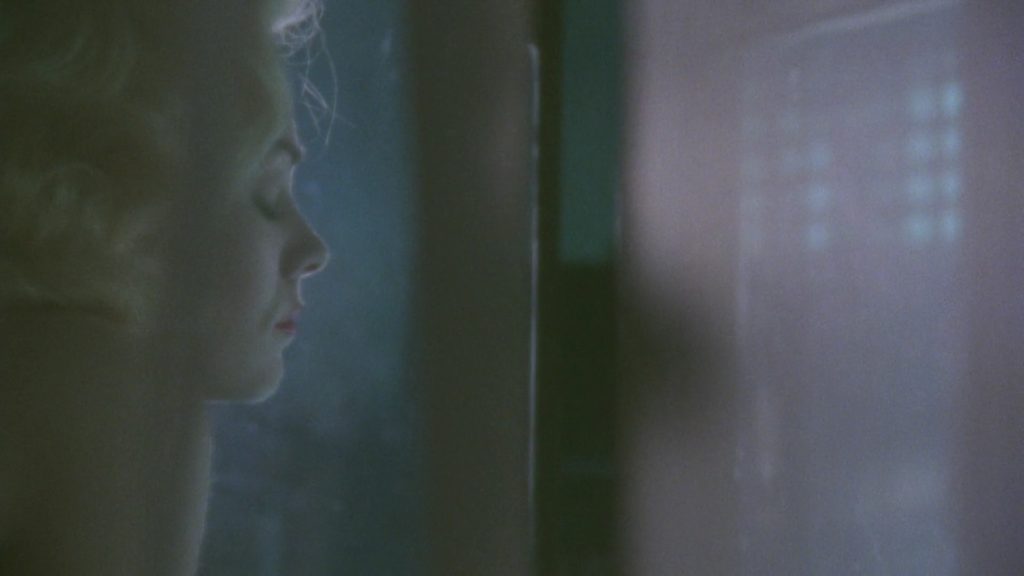
The Criterion Channel is like the bible of streaming services for people who give a damn about movies. For the sheer variety, history and global diversity they offer they are truly the crown jewel among the lot. When they rose out of the ashes of FilmStruck’s demise they picked up the torch for serious movie lovers and obsessives and for the past year they have proudly showcased a wide array of films and an almost limitless back catalogue of over one thousand movies, much of which will be there for the foreseeable future. When the streaming service began in 2019 they offered up a free movie every week that anyone could watch. It didn’t matter if you had a subscription. It gave audiences a little taste of what to expect from the channel. For cinephiles these choices were very “movies-101”, with the likes of Chungking Express (1994)and Stalker (1979)being so entrenched in the canon that I can remember them being mentioned among the all time greats when I first started getting into movies in 2004 at the perilous age of thirteen years old. But in addition to those movies they introduced viewers to Elaine May with her film Mikey and Nicky (1976), Karel Zamen’s delirious animation in The Fabulous Baron Munchausen (1961)and there was even room for wuxia with John Woo’s Last Hurrah for Chivalry (1979). As a lead-in for the channel you couldn’t ask for much more than what Criterion presented, and I had a wonderful time writing about each of these films as they aired to both highlight the channel and what I’d be doing with my patreon. I’m particularly proud of a prose based piece of writing that was published in conjunction with Barbara Loden’s Wanda (1970). To this day I think it’s the best thing I’ve ever written, and in the process I fell in love with Loden as not just a filmmaker and an artist, but as a woman, as I explored her life and dreams in I am Wanda (1980).

When the channel officially launched they did so while highlighting a set of noir films from Columbia Pictures and on the one year anniversary of the Channel they have brought those films back, along with some sister films to expand on the initial mission statement of what the Criterion Channel would offer. One year out, what I remember about the experience of watching most of these films is slipping away into the shadows and haze they offered in the deep dark of quiet nights while being snuggled next to my husband. I fell asleep for brief moments during almost all of these films, but I subscribe to the notion that falling asleep during a movie is a gracenote of a sort: a gift of comfort. But I was taken with some of these films and in particular I strongly remember the proto-Fargo-ness of Jacques Tourneur’s Nightfall (1957), and the way Kim Novak announced herself in her debut performance as Lona MacLane in Pushover (1954). At the time I wrote about Novak’s performance:
“She’s seductive, like a drug, and coils around the viewer until you find yourself nodding along to every last thing she’d request or demand, and as a woman, that power is tantalizing. I’d love to be as beautiful as Kim Novak, with an aura around me that was enviable in the way truly beautiful people are. Watching Kim Novak gives one the same feeling of perfectly applying a smokey eye-shadow and the intoxication that comes with artistic femininity.”
Of everything that I’ve watched on the Criterion Channel in the past year the most significant of these viewings had to be when I dove into the collaborations between director Nicola Roeg and actress Theresa Russell. In particular, I haven’t been able to stop thinking about Bad Timing (1980) and Insignificance (1985), both of which had an effect on me that could be described as life-changing. Art offers a subjectivity that allows me to wrap myself around certain scenarios and characters with the context of my own life, and as a result film can sometimes act as a model of communicative therapy for myself. In these two films Theresa Russel plays a stylized version of Marilyn Monroe (Insignificance) and the self-destructive Milena (Bad Timing). In both she’s playing these characters that audiences will recognize as corpses before they can be anything else. In Bad Timing, Milena’s cold, grey flesh is shown before any other part of her story and the film works backwards to show how we arrive at the image of death. It’s a familiar one of bad men, and external forces trying to control someone who is doomed to this world. In Bad Timing Theresa Russell’s performance echoes that of Sheryl Lee as Laura Palmer in Twin Peaks. In my essay on Bad Timing I wrote that Russell plays Milena as if she is old before her time and that she’s so very tired of everything. She lights the flame at both ends while drowning in whisky amid all the frustrations of the prodding, shitty men she’s been surrounded by her entire life. I found companionship in the way this character saw the world and the way that Theresa Russell brought her to the screen. I don’t believe I’ll stop thinking about her anytime soon. These films aren’t currently available on the Channel at this time, but they’re both available on DVD through the Criterion Collection.

Earlier this year my husband and I set out on a quest to watch all of Akira Kurosawa’s films, and it is something that would have been much more difficult to accomplish without the access of the Criterion Channel. To this day, they still have the vast majority of his films on the service, and while we’ve been going through his filmography slowly it has allowed for us to really marinate in what his films have to offer and to watch Kurosawa evolve. He wasn’t the director we all know and love in the beginnings of his career, because he was working under heavier censorship rules and forced to support the Imperialist government of Japan at the time by inserting various bits of propaganda in all of his war-time pictures. The most fascinating aspect of this period of the master’s work is how he smuggled in his own political feelings through a subtle usage of form that he had complete control over by the time of1944’s Sanshiro Sugata Part Two. I wrote about one scene that I found especially startling given the time and conditions of its release:
“When Sanshiro fights an American boxer named William Lister a lesser director would have configured this encounter as an us versus them skirmish, but Kurosawa uses it as an opportunity to understand one another through their combat techniques. It’s a masculine interpretation of formed relationships, but one that has ultimately always worked in cinema. Sanshiro watches Lister’s body and Lister does the same. They’re both counter-fighters, and especially in the case of Judo, it’s what the entire martial arts technique is built upon, and when Lister does eventually lunge, Sanshiro catches his arm. Lister tries to wrangle himself free, but Sanshiro steps with him so he can’t wiggle loose. Kurosawa frames this in a wide-shot, and because we can see the entirety of their movement we can see the relationship they have to one another as fighters. While Lister is trying to free himself of Sanshiro’s grip the Judo technician is watching Lister’s feet and when Lister steps in too closely Sanshiro positions his foot so he can use a hip-toss into a throw combination maneuver and win the fight. The Japanese audience cheers and the American audience defeated, but Kurosawa makes the dangerous decision to have Sanshiro help the American man to his feet.”
One of the greatest curatorial strengths of the Criterion Channel thus far has been its ability to showcase specific actors and actresses from Old Hollywood. They currently have a spotlight set on the delightful Rita Hayworth, but in the past they’ve offered up a bounty of features from the likes of Humphrey Bogart, Burt Lancaster, Gary Cooper, Bette Davis and Barbara Stanwyck. The actor among those that I focused on first was Barbara Stanwyck. At this time last year I wasn’t very familiar with her body of work or her talents as an actor, but I quickly fell in love with what she does, especially in pre-code films from the likes of William A. Wellman, where it wasn’t strange to see her trading fists with the likes of Clark Gable. I wrote about Stanwyck last year:
“Stanwyck has a few trademarks that are consistent throughout all of these films. She’s a master of body language and always perfectly conveys everything her characters mean through the way she carries herself. Frank Capra and William Wellman are good directors, and have numerous films featured in this set on the Criterion Channel, but the draw in these movies, the real author, is Stanwyck. When watching these movies certain patterns emerge. I love the way Barbara Stanwyck walks whenever she’s playing a character who isn’t a Spring daisy. She saunters with her hands in her pockets (POCKETS!). Her hands are hidden away downstairs, her elbows bent, obviously taking up more space, but what impresses me most about the way that she walks is that she doesn’t do so with her hips, but her shoulders. She’s angular. Most women who are movie stars, walk with their hips first. They sway, which emphasizes her form, but the way Stanwyck walks is triangular, uncommon, rare, it’s a subtle statement of star-power and dominance itself. My eyes are drawn to Stanwyck when she walks, because she carries the rest of her body in tune with that movement. Her eyes are steely, squinted, almost in the same way that made Clint Eastwood famous many years later. Cowboy shit. You get the sense that you could hit her with a car and she wouldn’t even move. But I wouldn’t categorize the way she walks as masculine either, because the way she moves doesn’t come with a socialized casualness in the same way men tend to move. She walks in a way that is still very cognizant of her surroundings, as if she’s scheming in her own private thoughts. If I saw Barbara Stanwyck walk into a room I would know immediately that she was someone of importance, because she doesn’t move like anyone else. She moves like Barbara Stanwyck.”

But it was Bette Davis who had the biggest emotional impact on me as a viewer, as critic and as a woman. Now, Voyager (1942) had a palpable, almost life-changing effect on me as I watched Davis’s character struggle to ultimately let go of the past and try to move forward with her own life despite the abuse she had grown up around. What’s so extraordinary about Davis in this role is that even when she does recover you can still see the weight of the past in how she carries herself, how she talks and how she moves. She never lets the character become completely confident of herself, and it is a daring choice on her part, because it would have been easy enough to turn on the fire and embers that she is capable of emitting. Instead, she opts for something softer, reserved, tired, but never at the expense of the euphoria that she feels when the character does ultimately get control of her life. It’s a performance I’ll be thinking about for the rest of my life, and even having only watched the film a month ago I’m ready to return to it, study it and feel it again and again.
There’s all this wound up confidence in Davis, because she knows she can do anything, and delivers as much time and time again. Her work in The Letter (1944), which mostly captured with her back facing the camera is a master-class in how to move ones own body to tell a story. For all the criticism that Davis sometimes gets for being a little too much or a little too explosive and larger than life much of her work strikes me as subtle, or rather, the aspects of her ability and talent that I gravitate towards are things that others don’t seek out as much when thinking about acting. I watch Bette Davis and she makes me want to try out acting. She makes it seem like the most fun anyone could ever have even when you can see all the work she puts into her characters. While watching Davis you can see that she never lost the child-like notion of “play”, and because of that, the time that she does spend with child actors in a film like Now, Voyager feels all the more powerful. After witnessing many of her films through the Criterion Channel I now worship at her altar, and throughout 2020 I have a loose plan to watch many more of her features. I can’t get enough of Bette Davis, and the absolute best thing one can say about the Criterion Channel is that through their curatorial work they will light the spark for others to dive deeper as well. Cinephilia is a mindset of discovery, about people, places, time periods and history, and Criterion’s streaming service is without a doubt the kindest to these principles of learning. It is one of the best things to happen in all of movies in the past year, and now that we are all stuck at home for the foreseeable future it has only illuminated for me further that they are a torch carrier for cinema.
You can subscribe to the Criterion Channel here
If you enjoy my writing you can subscribe to my patreon here
Be First to Comment